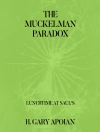Rare Earth Frontiers is a work of human geography that serves to demystify the powerful elements that make possible the miniaturization of electronics, green energy and medical technologies, and essential telecommunications and defense systems. Julie Michelle Klinger draws attention to the fact that the rare earths we rely on most are as common as copper or lead, and this means the implications of their extraction are global. Klinger excavates the rich historical origins and ongoing ramifications of the quest to mine rare earths in ever more impossible places.
Klinger writes about the devastating damage to lives and the environment caused by the exploitation of rare earths. She demonstrates in human terms how scarcity myths have been conscripted into diverse geopolitical campaigns that use rare earth mining as a pretext to capture spaces that have historically fallen beyond the grasp of centralized power. These include legally and logistically forbidding locations in the Amazon, Greenland, and Afghanistan, and on the Moon. Drawing on ethnographic, archival, and interview data gathered in local languages and offering possible solutions to the problems it documents, this book examines the production of the rare earth frontier as a place, a concept, and a zone of contestation, sacrifice, and transformation.
Innehållsförteckning
List of Illustrations
Acknowledgments
Introduction
1. What Are Rare Earth Elements?
2. Placing China in the World History of Discovery, Production, and Use
3. ’Welcome to the Hometown of Rare Earths’
4. Rude Awakenings
5. From the Heartland to the Head of the Dog
6. Extraglobal Extraction
Conclusion
Appendix
Notes
References
Om författaren
Julie Michelle Klinger holds a Ph D in Geography from the University of California, Berkeley and is an Assistant Professor in the Department of Geography and Spatial Sciences at the University of Delaware.












